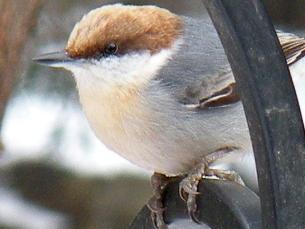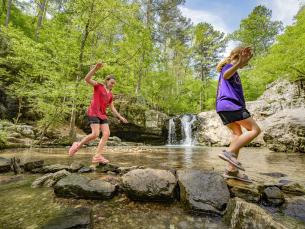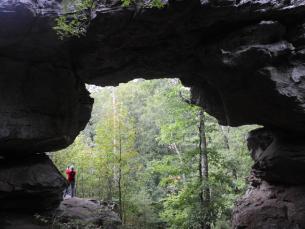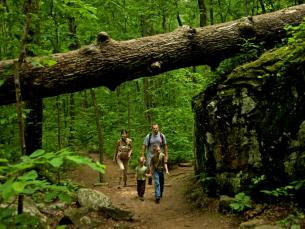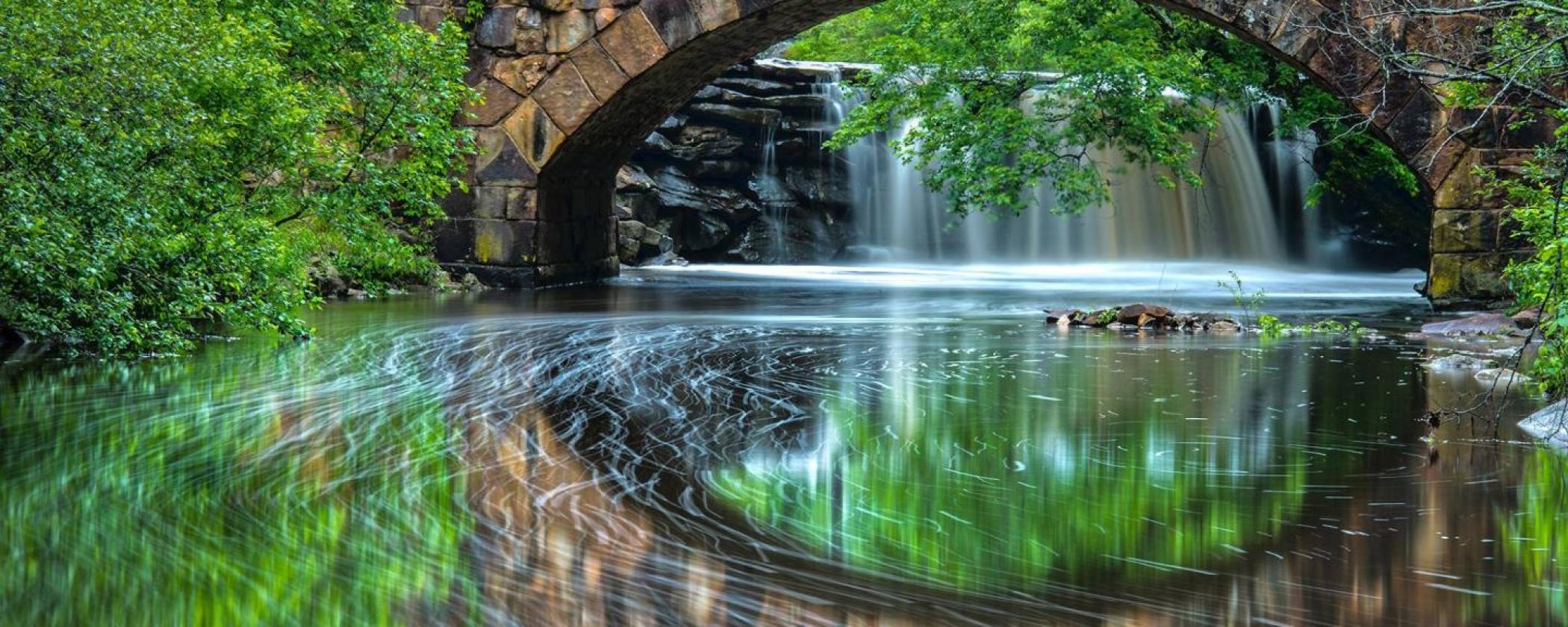
The heritage of the Davies Bridge at Petit Jean State Park
By: Zoie CliftThe Davies Bridge at Petit Jean State Park in Morrilton is 90 years old this year. The stone arch bridge was built by the Civilian Conservation Corps, CCC, in 1934 and has strong ties to the history of Arkansas State Parks.
The bridge, which spans Cedar Creek, was constructed as part of the CCC project that built the foundational infrastructure at Petit Jean, Arkansas' first state park.
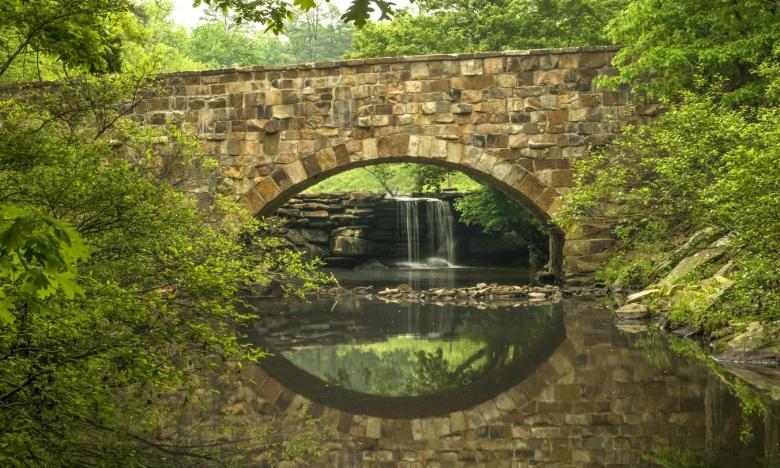
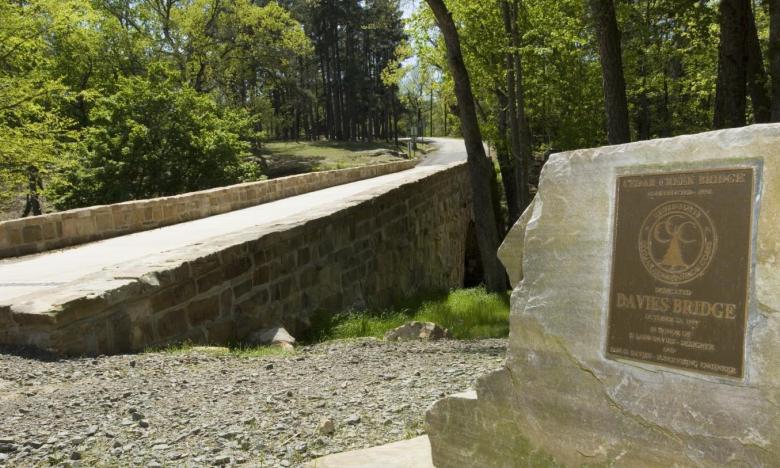
Richard Davies, former director of Arkansas State Parks (1976-1990) and executive director of the Arkansas Department of Parks and Tourism (1990 - 2015), has strong family ties to the bridge, which was built from native stone from Petit Jean Mountain.
His grandfather, Samuel Davies, was a project superintendent for the development of Petit Jean State Park, a role that eventually led to him becoming the first director of Arkansas State Parks. His father, Ladd Davies, also worked at the park and designed the bridge, which has become a much photographed architectural feature of the park through the years.
Before coming to work at the park, his father had been an engineering student at the University of Arkansas at Fayetteville. This was during the Great Depression and having multiple kids at college at the same time was difficult to do. So he opted to drop out so that his little sister could go to Fayetteville instead. He eventually went back to school and got his engineering degree but in the meantime, went to work for his father as one of the civilian supervisors over the CCC enrollees at Petit Jean.
The CCC crew at Petit Jean, which was known as Company V-1781, were all World War I veterans. A skilled CCC crew of around 20 men helped build the bridge, mostly by hand.
“When you had that many guys from that many backgrounds who had all been in World War I, you always had somebody who could do everything or something,” said Richard Davies.
When it came time to build the bridge, the assignment was given to Davies' father, who had never built a bridge before. “At some point my grandfather had gone to work for the Missouri Pacific Railroad as a civil engineer,” said Davies. “And he gave him a manual from the Missouri Pacific Railroad about building bridges. So that is where he got his design.”
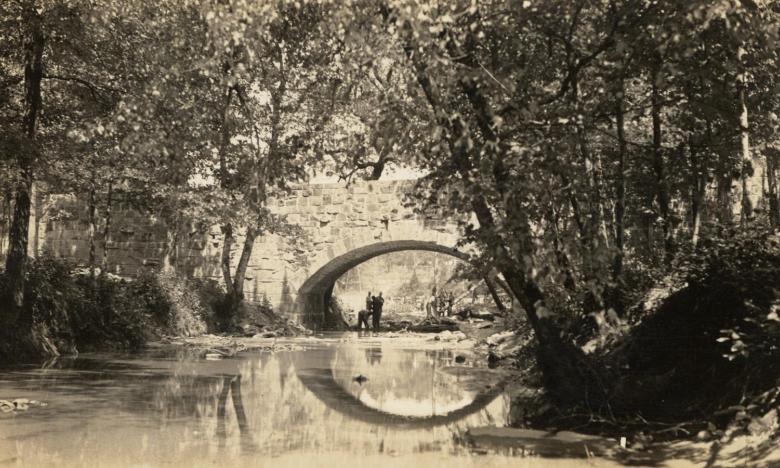
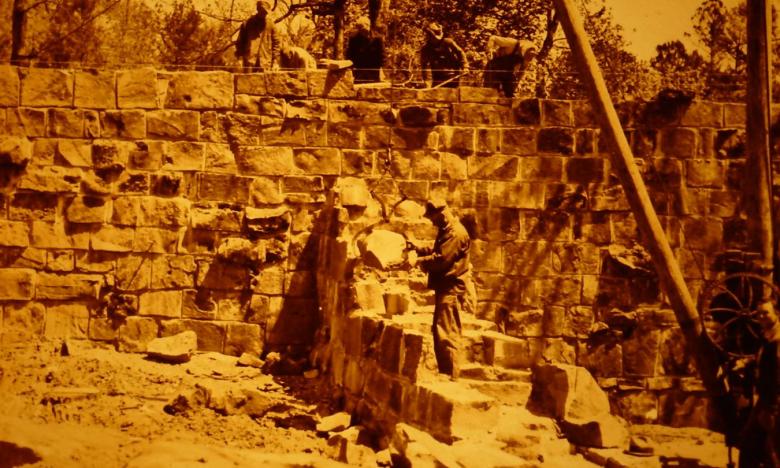
The bridge is said to be the largest stone arch bridge in Arkansas. The arch of it measures in at 10 feet high and 20 feet long and the deck length is 60 feet. The depth of the keystone of the bridge, the last stone placed in an arch, is 22 inches.
The bridge, which is on the National Register of Historic Places and one of a few masonry arch bridges left in the state, is still being used in the same capacity as when it was first built as a vehicle and pedestrian bridge. Red Bluff Drive crosses over it from Ark. 154.
“It has been there my whole life,” Davies said. “It has been heavily repaired once. The park called Dad and got with him about how it was built and how do we fix it. They literally had to take pieces out and number them and put them all back…I think the great thing is that it is still there. And still used.”
When the bridge was first built it was called Cedar Creek Bridge, and then eventually renamed the Davies Bridge. “I think Dad was very honored with it,” he said. “He came to the dedication of the new name. He and my mom both came and they were probably in their 80s at that point.”
The bridge represents not only Davies’ family heritage, but also the CCC ties to Arkansas State Parks. Petit Jean was the first to be built and further growth to the state park system took place in the Depression era of the 1930s with vital help by the CCC. They built infrastructure, much of which still stands today, at state parks that include Mount Nebo, Lake Catherine, Devil’s Den, Crowley’s Ridge, and Buffalo River State Park, which is now known as Buffalo Point and is part of the Buffalo National River. Arkansas currently has 52 state parks.
The impact of the CCC in Arkansas is far-reaching. “There are family ties for me,” said Davies. “But I think the whole CCC program is how we got our original state parks built. It makes you wonder if we hadn’t had them, how long would it have been until we had a state park system? There were some states out West that didn’t have state parks until the 60s. The craftsmanship and the design, I found at least, were as much an attraction as the nature of the park. The old Mather Lodge, the old cabins, the old visitors center, the pavilions, they don’t build them like that anymore.”
The CCC were building at a time in history when the entire concept of ‘parks’ was still a new idea. “Parks were not a thing that we had until the late 1800s when the national parks were established,” said Davies. “The whole idea of a park, a state park or a national park, was an American idea and when you got in the 30s [the idea] wasn’t but, if you pushed it, 50 years old.…We had wild and beautiful places but we didn’t have access to them. A big deal about establishing state parks was to give people access to these areas. So you would have a road to get there and a place to stay or a place to camp or eat.”
Along with bridges, the CCC worked on projects at Petit Jean that included building trails, roads, cabins, and Mather Lodge.
The Davies Bridge is part of the legacy of the CCC and their impact on the entire state park system in Arkansas. Davies said some might not be familiar with this piece of history and how these parks got started. “That is why I think the interpretive programs are so important in these parks,” he said. “Here is where we came from and here is why and here is what we are supposed to be doing.”
Petit Jean State Park is located at 1285 Petit Jean Mountain Road in Morrilton.

